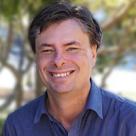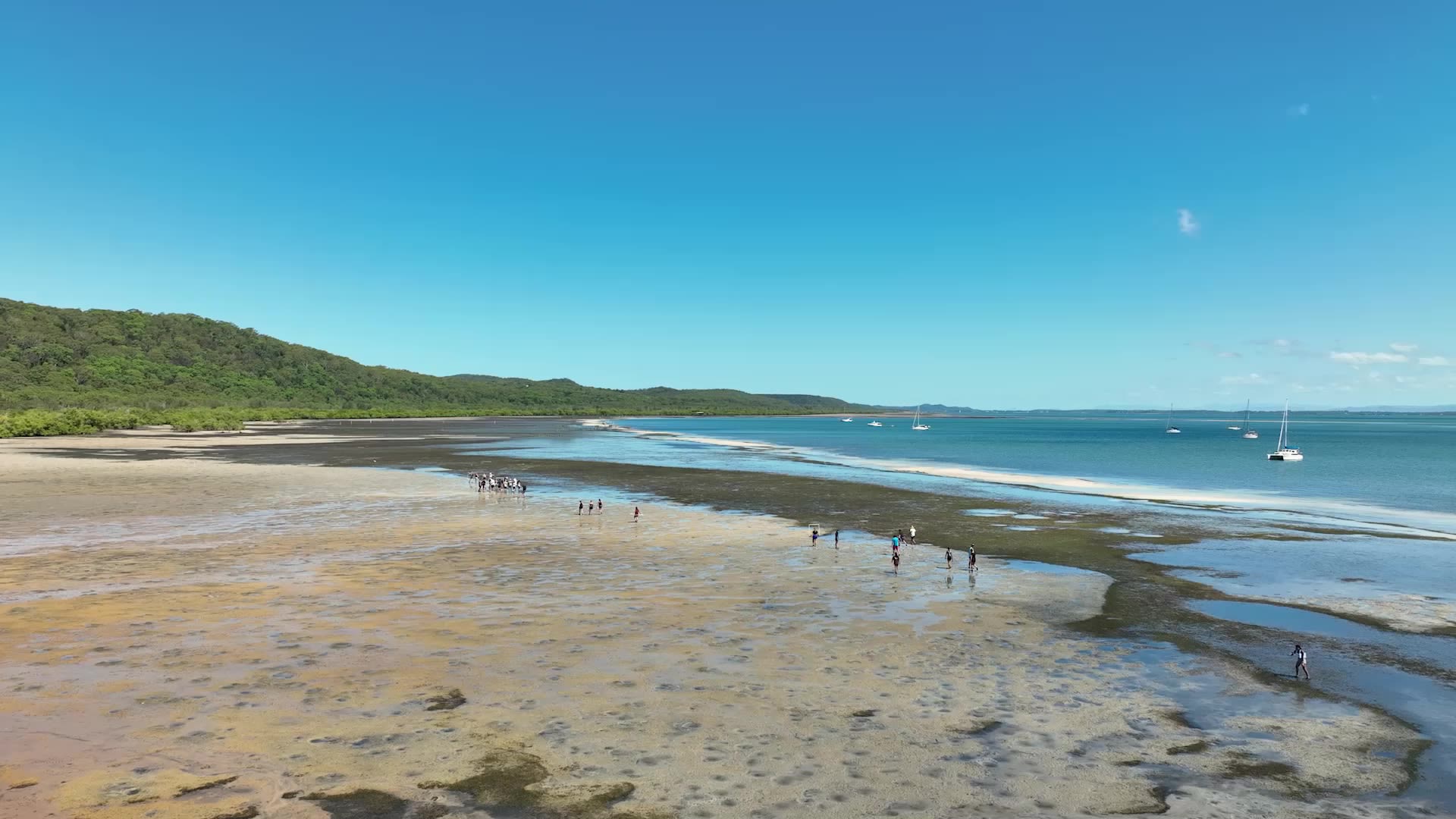
Every year, Bond University environmental scientist Dr Daryl McPhee takes international students to one of the most beautiful classrooms on earth.
In Australia there are plenty of things that qualify as killer: the sharks, the snakes, that cute little octopus with the blue rings. But today on North Stradbroke Island, it’s the view. International students from Bond University’s Study Abroad Program have trekked up Adder Rock — an anomaly on the world’s second-largest sand island — and are gazing out to sea on the sort of day that can make you Insta-famous.
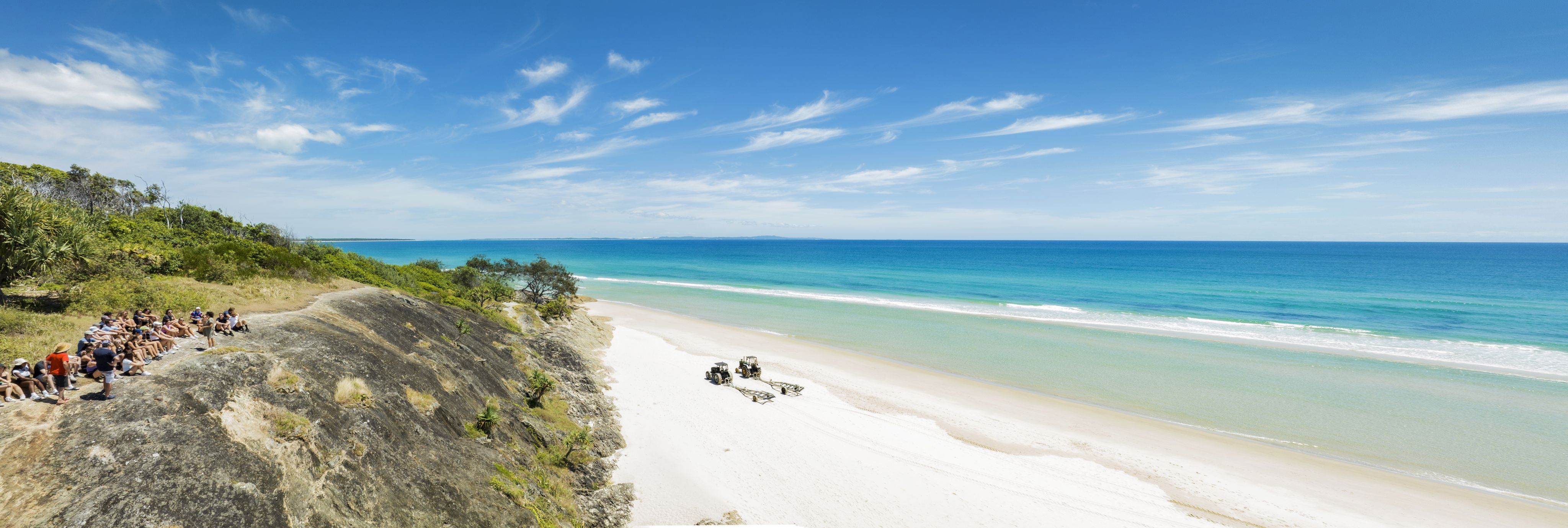
Adder Rock.
Adder Rock.
This is Island Class, a field trip hosted by Associate Professor of Environmental Science Daryl McPhee, an expert on the ecology of Moreton Bay and its islands. Over four days, students will map seagrass, assess the impact of four-wheel-drive traffic on ghost crabs, study marine debris, and enjoy a night out — island style — at a local community club.
“Now I know it’s called a club,” Dr McPhee tells them, “but it’s not the sort of club most of you are used to. This is not Cavill Avenue.” But first there’s song and dance of a more ancient kind in a place the Quandamooka people call Minjerribah.
Patrick Coolwell stands amid swirling smoke in a bora ring he has recently breathed new life into by hacking away bush near Dunwich, the gateway to the island. It was built within living memory but Mr Coolwell says the ring it replaced, since destroyed by sand mining, stretched back into the 20,000-year-old Aboriginal history of Minjerribah. The Bond students, many barely a month off the plane from the US, take part in a Welcome to Country and smoking ceremony and witness ceremonial dances about animals central to the lives of the Quandamooka people, such as sea eagles and dolphins. It’s an honour to bathe in the cleansing smoke but Mr Coolwell is also pleased to share a unique culture that is resilient but demands nurturing.
“I’ve been brought up with culture since I was a young fella and it’s helped me through my life,” says the songman of the Nunukul clan. “But it’s scary because there’s not many songmen on the island — there's probably only half a dozen of us and I’m the youngest. The language will slowly die unless we learn and teach it.”
Mr Coolwell has been thinking a lot lately about what it means to be an Aboriginal man still living on country barely 15km from Brisbane, Australia’s third-largest city. “We lost one young girl just recently; she left five kids behind,” he says.
“All the aunties and uncles are pitching in and the kids are made to feel loved and welcome at school. Everyone looks after each other and I'm thankful for that - and this community.”
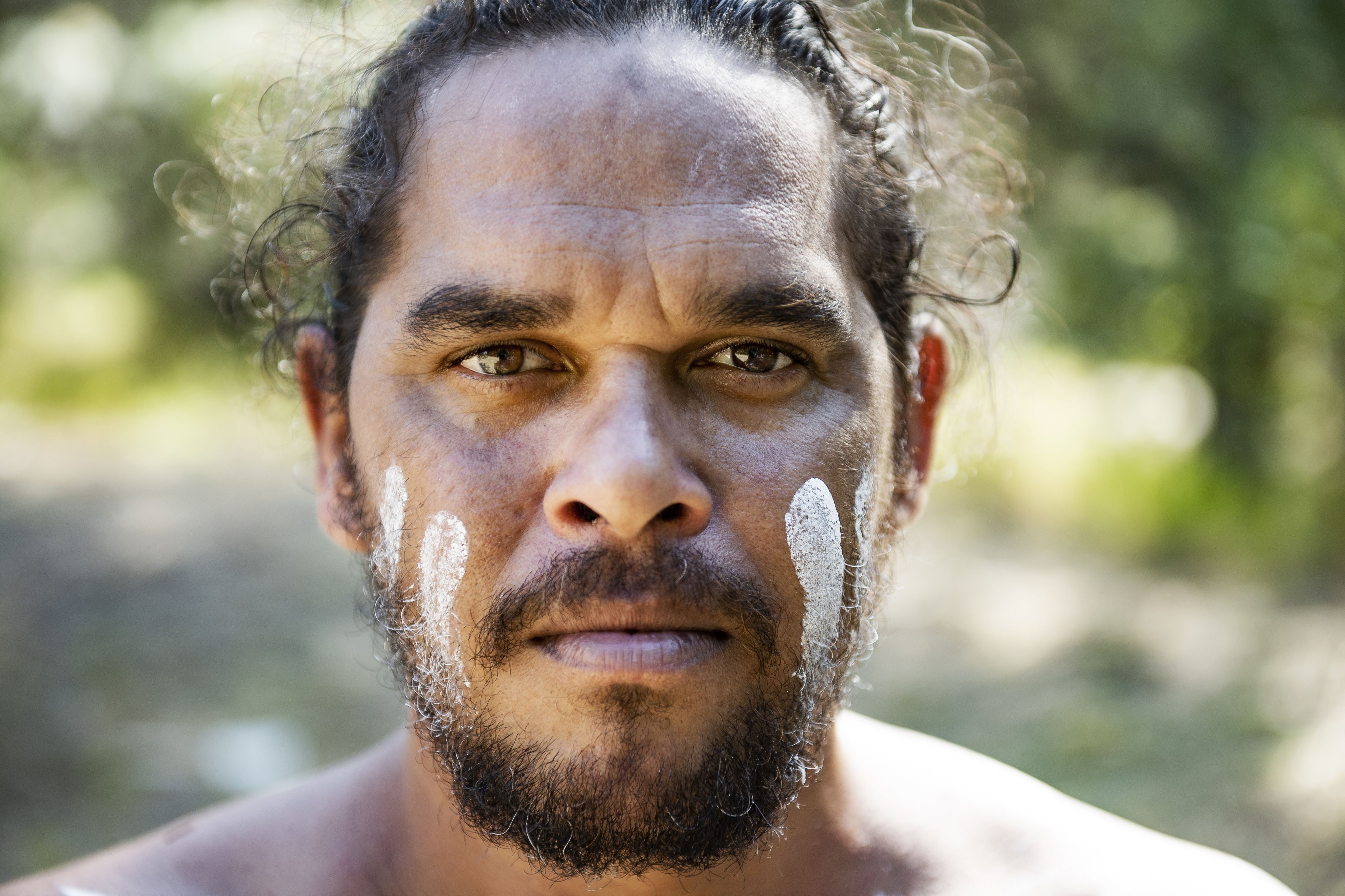

Later, at Brown Lake (Bummiera), students inch as close as they dare for selfies with a goanna that has darted up one of the trees that surround the calm waters. At Point Lookout (Mooloomba), they munch on wild warrigal greens and try to spot the old Aboriginal woman Dimpuna, who legend has it was transformed into rock. For Ben Yuter, who is studying finance and computer science in Massachusetts, it’s a warm respite from a snowy winter and a crash course in Australian ecology.
“It's a beautiful island, untouched in terms of its environment and the views are spectacular,” he says. “I mean, I was just walking five minutes ago and saw a kangaroo and her joey.”
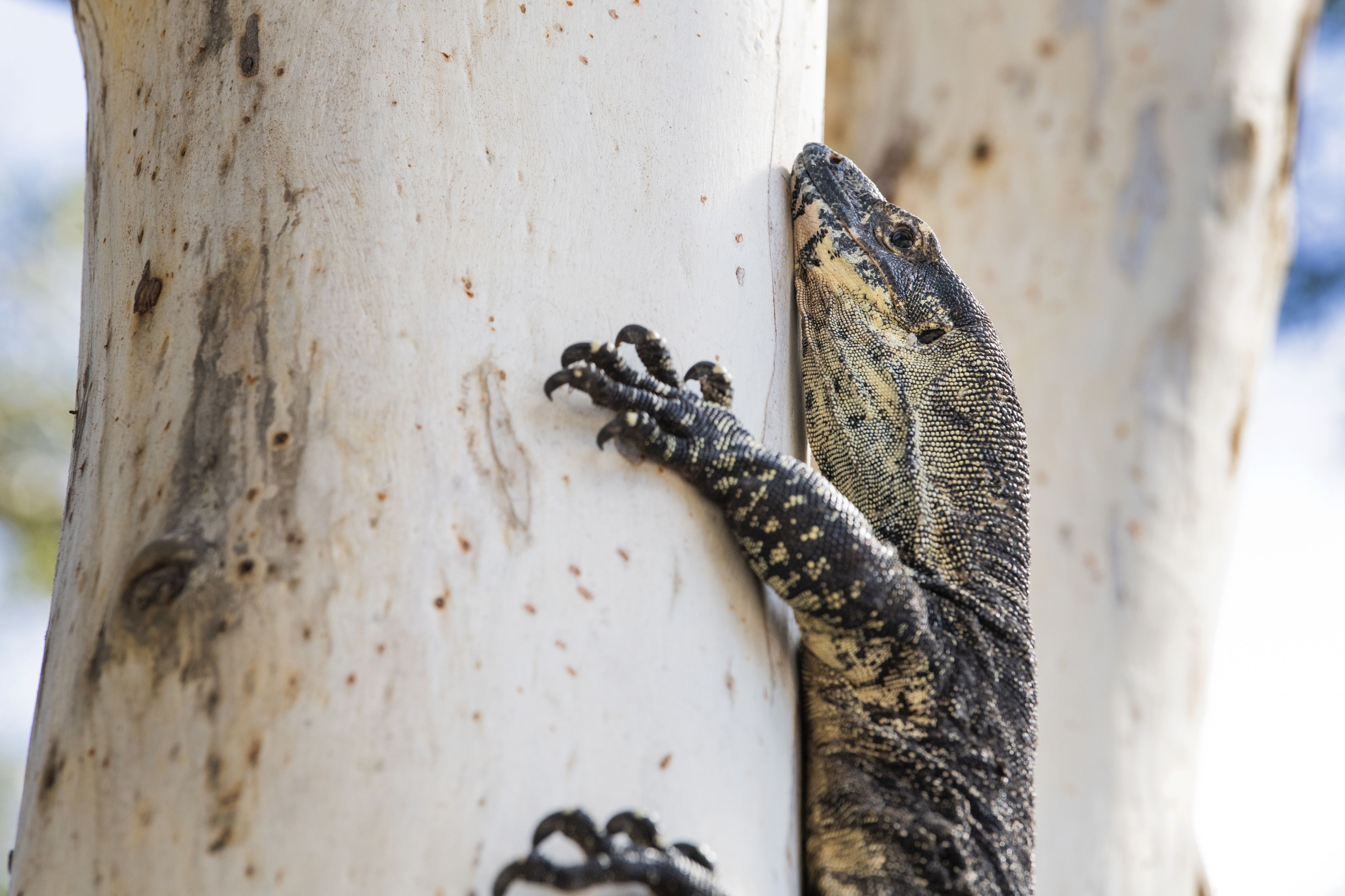
A goanna at Brown Lake.
A goanna at Brown Lake.
‘Straddie’ has long been a special place for Dr McPhee. “I've been coming to Stradbroke since I was a little tacker,” he says. “There are very few places in southeast Queensland where you can see magnificent surf beaches, koalas, kangaroos and amazing cultural heritage that's still significantly intact.”
Dr McPhee launched Island class in 2012 to share his passion for fieldwork. “The Island Class develops deep learning amongst students because they're experiencing the environment, they're experiencing culture,” he says. “They take home an appreciation of First Nations culture, how it was impacted by European arrival, how it's been maintained, the links to the environment. They learn how to undertake surveys in the field, and some of those skills are transferable. It doesn't matter if you're doing a business survey, a marketing survey or a psychology survey — it's just the environment that’s different.”
A keen fisherman, one night Dr McPhee helps Mr Yuter land an 84cm mulloway at Amity Point. These days, fishing is part of the scientist’s mindfulness routine — a way to catch his breath and reel in inner peace. But as a boy, it was a way to survive.
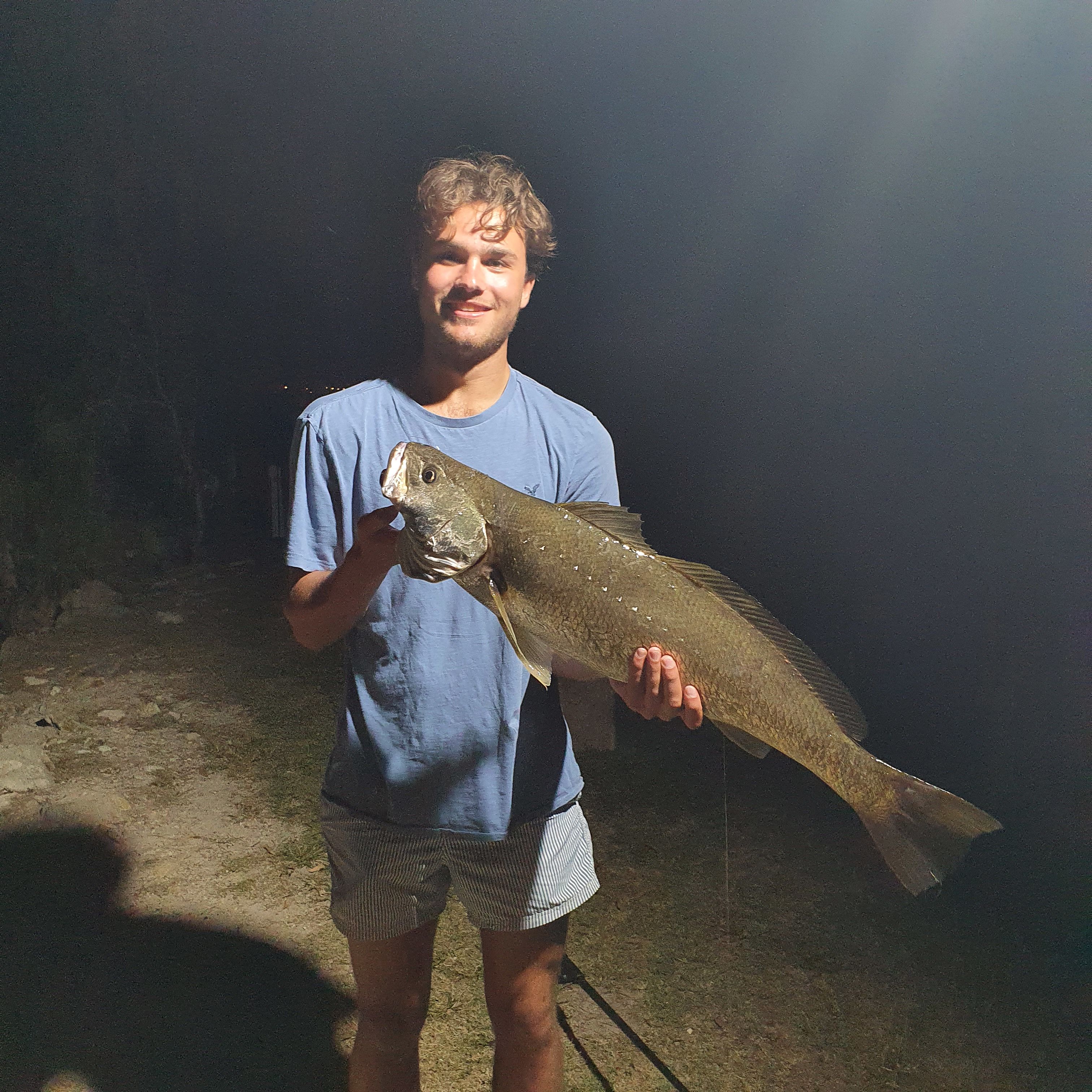
Ben Yuter and his catch.
Ben Yuter and his catch.
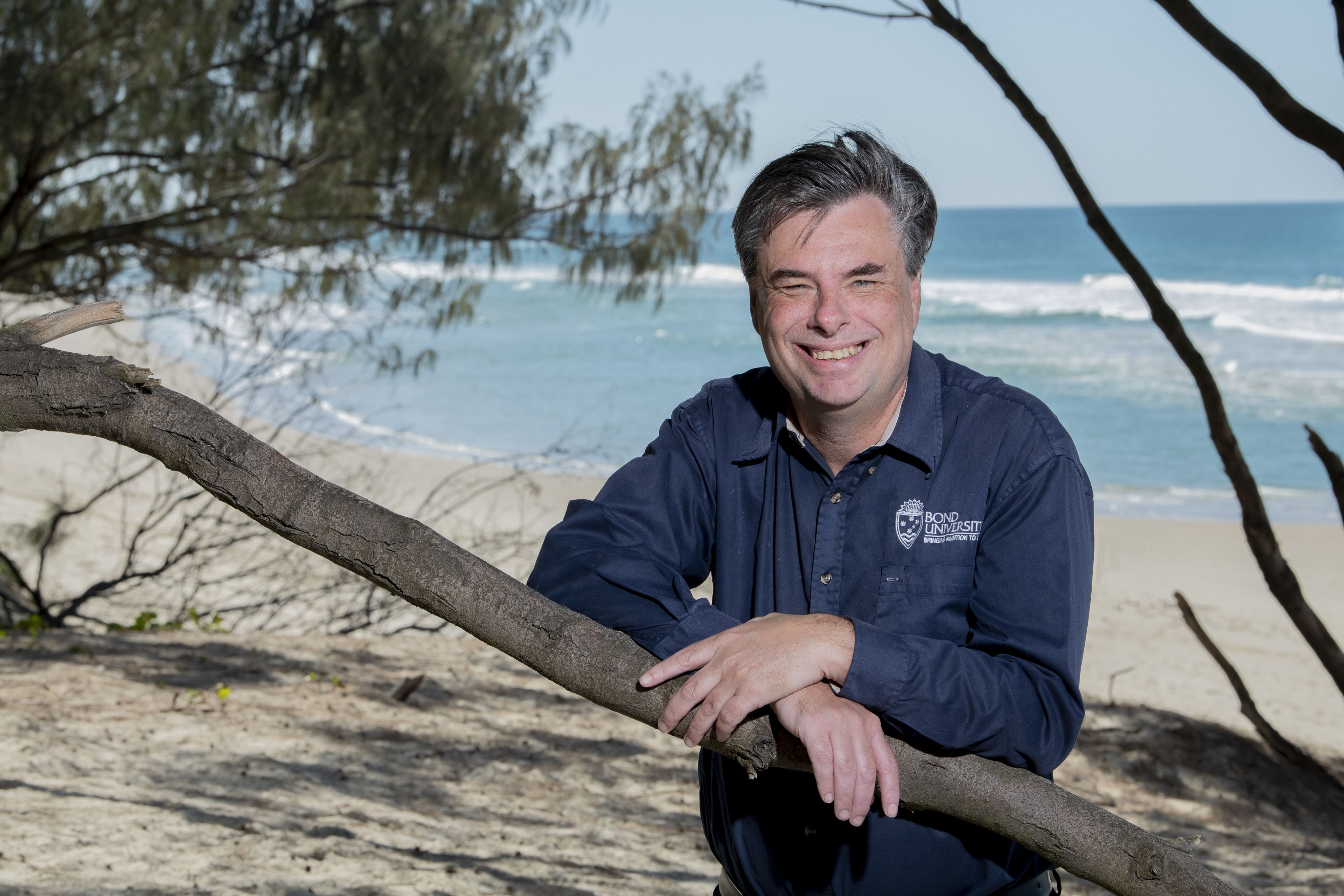
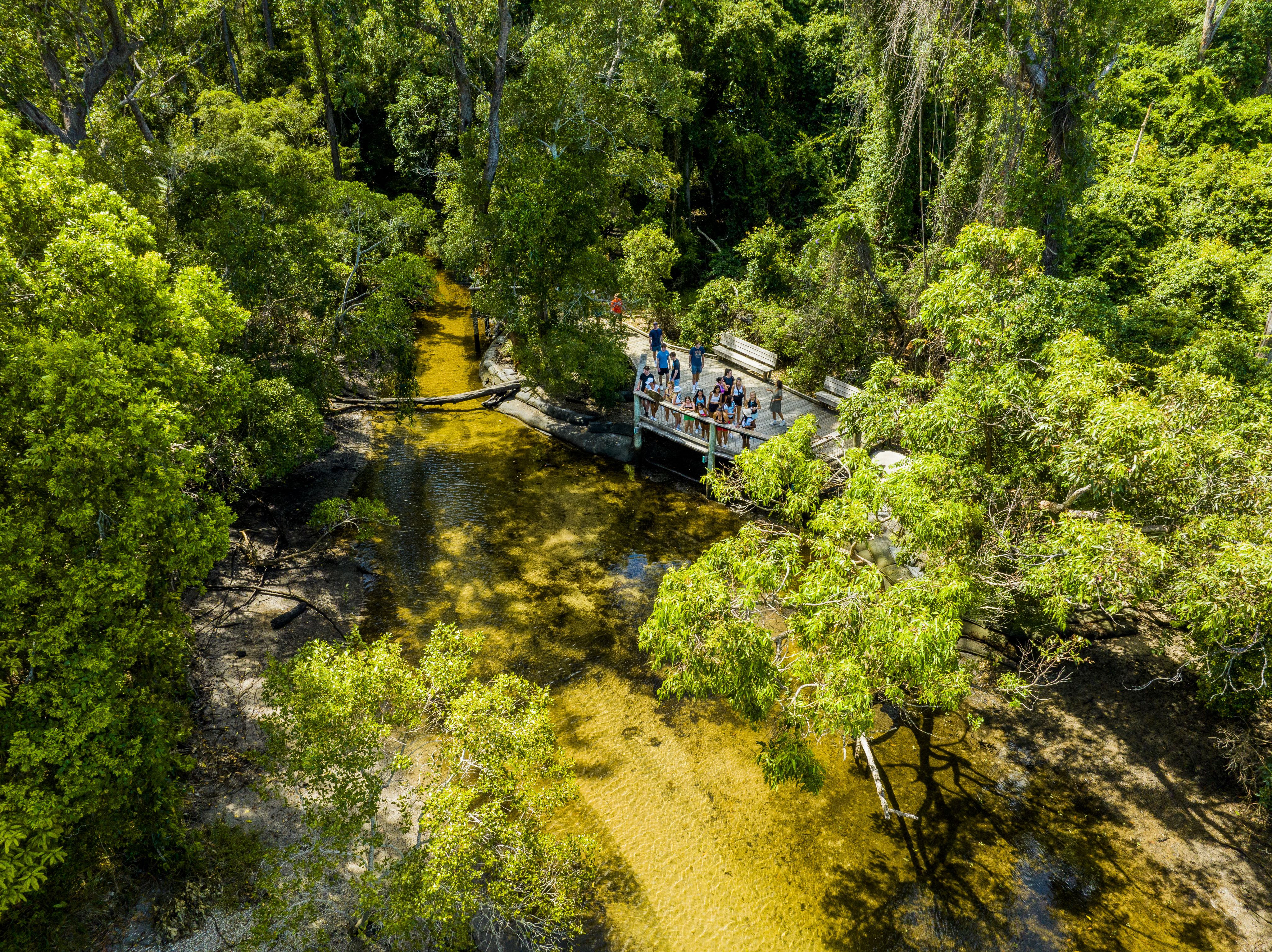

Both of Dr McPhee’s parents struggled with alcoholism and he lost his father when he was just 18 months old. Homeless and hungry as a teenager, fishing became a necessity. “One of the things about growing up without a functional family was the need to catch fish for food,” he says. “I developed a deeper appreciation for the environment, particularly for the marine and coastal environment — it's in my blood.” Now a world expert on sharks, he recently decided to provide three $2,000 bursaries so Bond students can attend Island Class and share his passion.
“I thought, what can I give back to the students? How can we bring to Australia some students who might have struggled financially, so they can be comfortable and take that extra financial burden off their shoulders in a small way?” he says. “I hope they feel supported during their academic journey and that they take away a deep appreciation of the environment, and skills that are transferable to their chosen disciplines. I know there's a couple more donors who are interested in getting behind my initiative and hopefully going forward, others can support these wonderful students to come to our shores.”
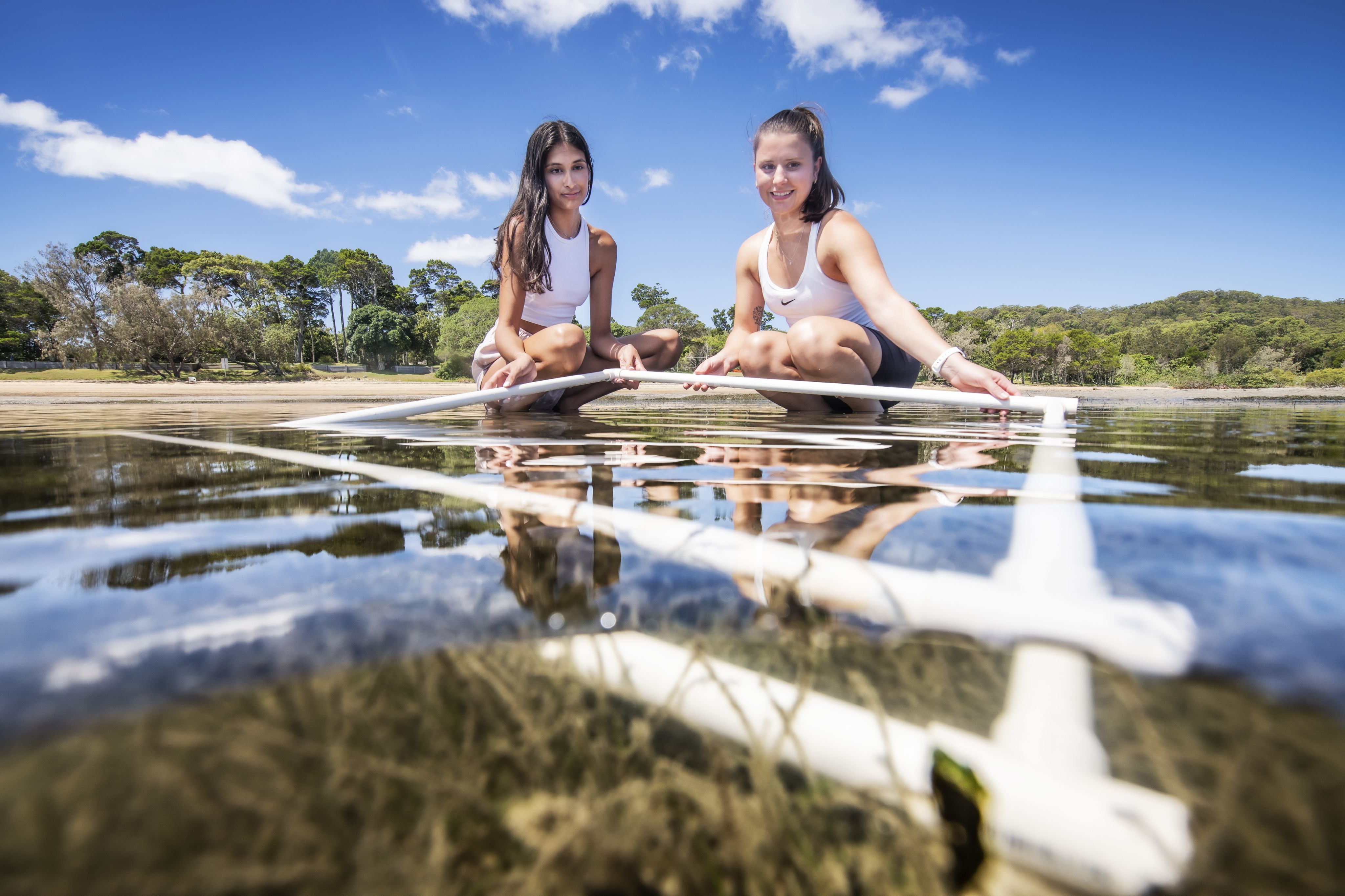
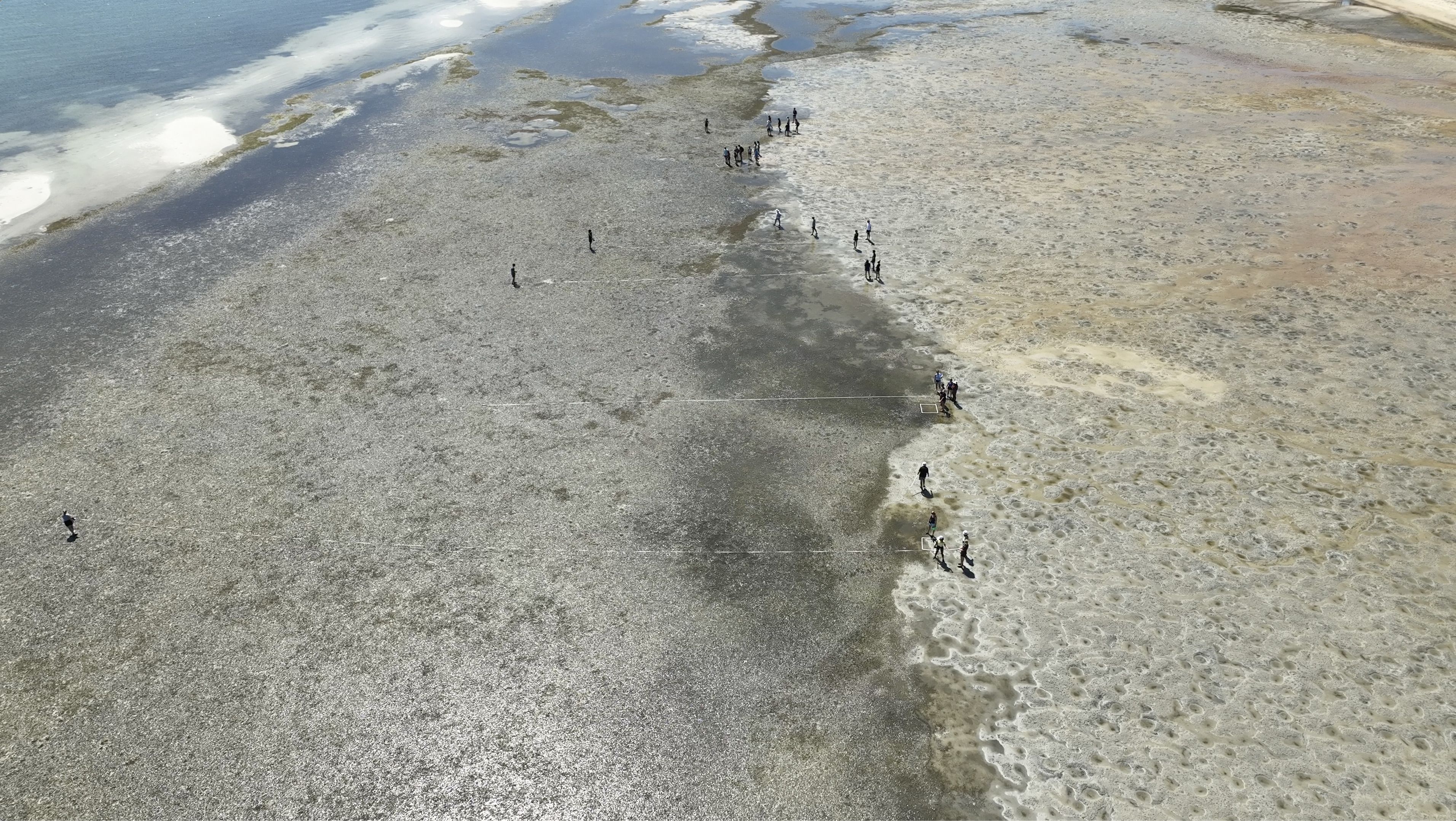
One of the students to receive a bursary this year is Teresa Vielma. Originally from Texas, she studies at Bentley University in Boston.
“It was a really amazing experience to come to this island and learn about the Aboriginal culture,” she says. “We just did a hike along beautiful beaches, caves and coves, and the water is amazing. I saw sea turtles and manta rays — just incredible views. Getting the bursary has made my experience so much better. It's given me greater financial security to be able to travel here.”
The next day on Flinders Beach, a sea eagle glides overhead as a group of students stumbles across an elusive ghost crab that has dodged the passing parade of 4WDs. It’s not quite the crocodile supposedly spotted further west at Myora Springs, dominating local headlines for days, but it could mean a few extra marks. They may be on a stunning Queensland beach on another picture-perfect day, but even Island Class finishes with an exam.
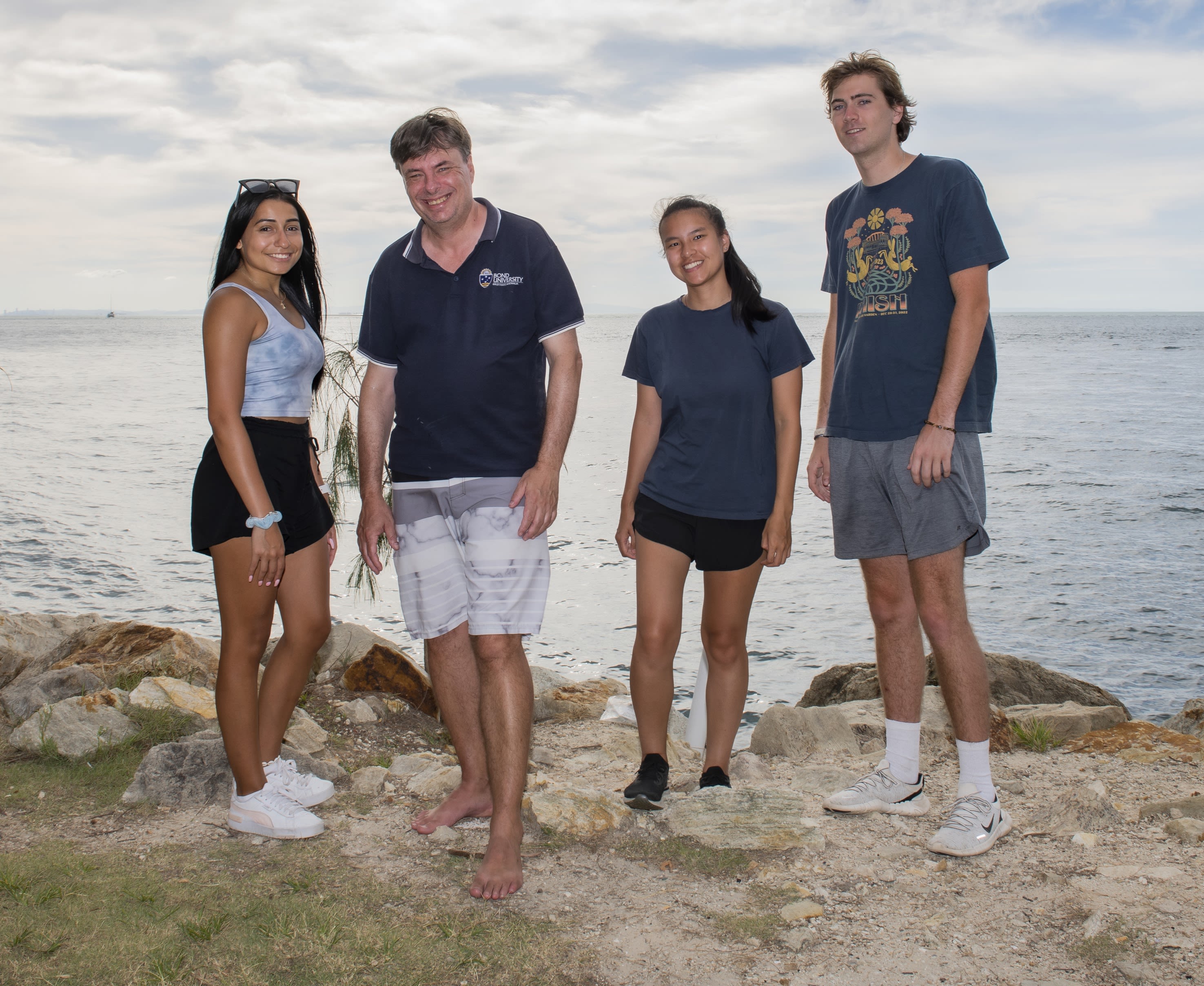
Teresa Vielma, Dr Daryl McPhee, Jasmine Zhen and Ben Yuter.
Teresa Vielma, Dr Daryl McPhee, Jasmine Zhen and Ben Yuter.

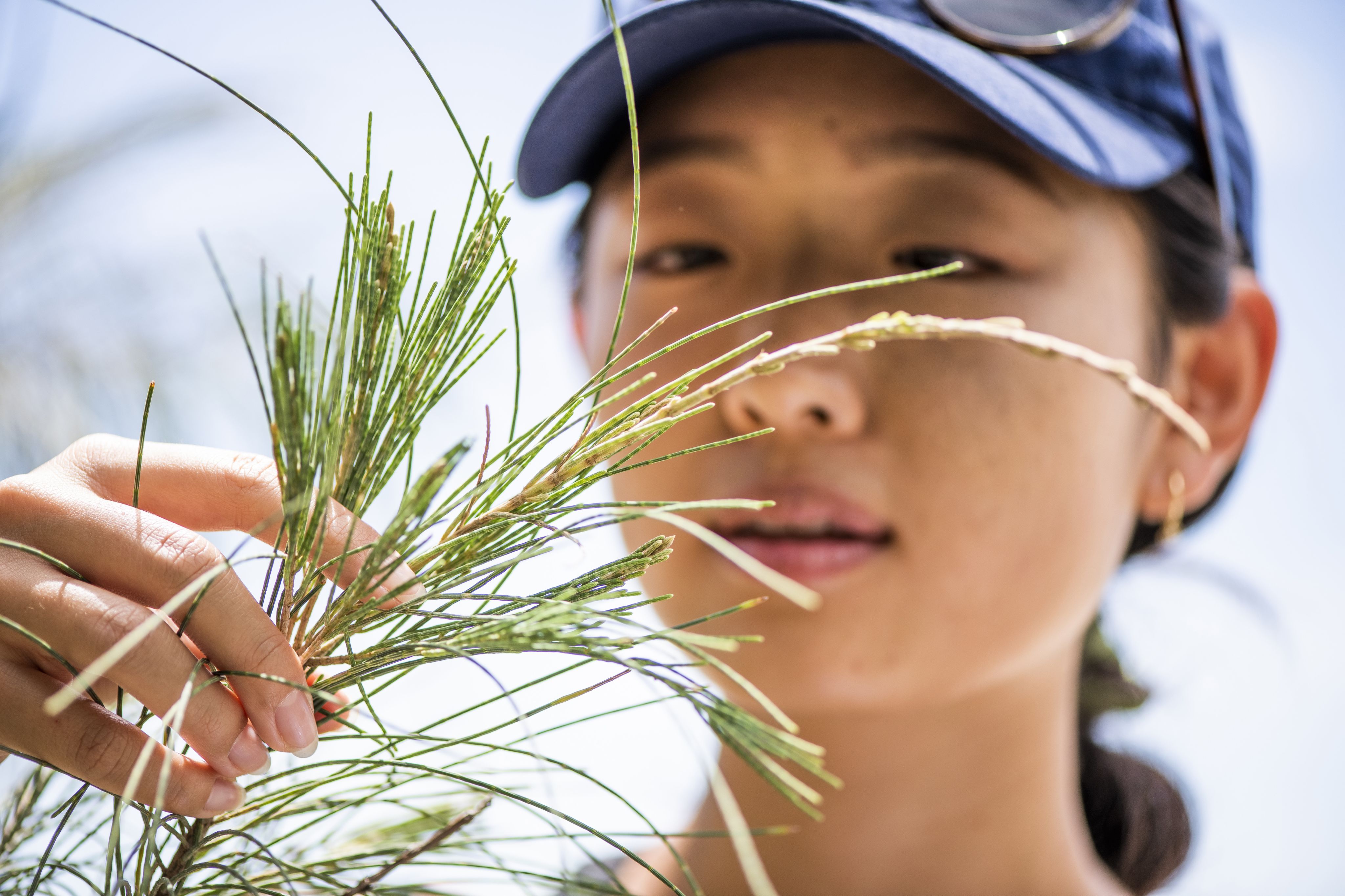
Environmental field study.
Environmental field study.

Time for a selfie at Point Lookout.
Time for a selfie at Point Lookout.

Mangroves meet Moreton Bay.
Mangroves meet Moreton Bay.
Original thinking direct to your inbox

Stories from Bond
